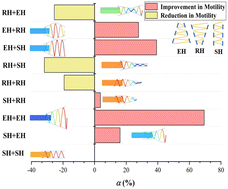Helical micro-swimmer: hierarchical tail design and propulsive motility
Abstract
Helical micro-swimmers have markedly extended the reach of human beings in numerous fields, ranging from in vitro tasks in lab-on-a-chip to in vivo applications for minimally invasive medicine. The previous studies on the propulsive motility optimization of the micro-swimmers mainly focused on the distinct actuation principles (e.g., chemically powered, magnetic- or ultrasound energy-driven) and paid little attention to the structural design of these swimming machines themselves. The improvements of the structures can assist the externally powered motors in providing propulsion in a tiny scale and satisfy the agile locomotion demands. This paper presents the design, mechanics modeling and available experiments of a novel type of hierarchical helical swimming robot that significantly enhances the motility of the helix-based swimmers. Validated by the resistive force theory, our numerical model can well analyze the mechanical properties with a variety of geometric parameters. The motion performance of the hierarchical and conventional helical structures in low Reynolds regimes is presented, highlighting the advantages of hierarchical swimmers over the existing typical swimmers. In addition, the stability and resilience of the hierarchical swimmers can be maintained at a decent level. Moreover, the variable forward velocity resulting from the combined hierarchical structures is investigated here, which can thereby serve as a reliable design strategy. The proposed hierarchical helical design enables enticing opportunities for various device systems of medical robots and bio-integrated electronics.



 Please wait while we load your content...
Please wait while we load your content...